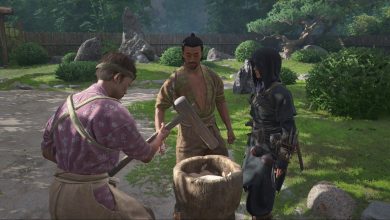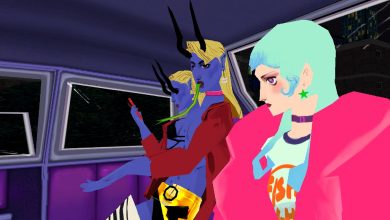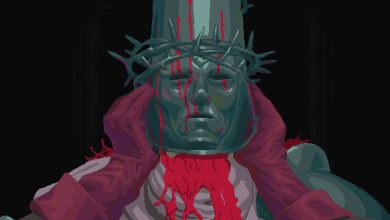The Last of Us’ post-apocalyptic homophobia reveals its shallow setting


Just like the season before it, The Last of Us season 2 walks a line between faithfully adapting its source’s already cinema-inspired material and expanding on that material to meet the medium of television. And so, as players watched in 2020’s The Last of Us Part 2 and viewers watched a few weeks ago in The Last of Us season 2, there’s a scene early in the story when Ellie and Dina are necking during a slow dance, and an older man — Seth, the community bartender of Jackson, Wyoming — tells them to cut it out, they’re in public.
OK, Seth, harsh, but not unreasonable. But then he makes the real source of his disapproval clear by calling them a lesbophobic slur. Joel decks him, Ellie redirects her anger to Joel for presuming she can’t defend herself, and we move on. Or, at least, I might have been able to move on. But The Last of Us, the TV show, keeps coming back to Seth the Community Bigot, culminating in some of the most pivotal scenes in this week’s episode.
The Last of Us seems to want me to believe that the only overt prejudice to have survived the apocalypse is queerphobia. But prejudice is not set dressing, not a one-off tool to construct a character beat. And when the folks behind the show insist on including one and hand-waving others, they’re telling on themselves.
[Ed. note: This piece contains spoilers for The Last of Us season 2 through episode 3.]

If I might repeat myself a little bit, none of this would have stuck in my craw so much if TLOU season 2 didn’t keep presenting Seth to me and asking, But what if he was really an OK guy? Things like this just happen, TLOU season 2 is saying. Seth’s not a bigot, he just had a heated gamer moment!
Bullshit. It is definitionally bigoted behavior for a man to harbor such distaste for queer people in his heart that cannot see a couple kids get a little smoochy while they slow dance without getting so angry that his mouth opens and slurs two members of his own close-knit community in public.
To be clear, if Seth and Ellie were real people in a real community, I think episode 2 presents the ideal resolution: Maria, a community leader, proactively makes sure that Seth apologizes, including with a gift, at the first opportunity, and there’s no overt expectation that Ellie or Dina will forgive him. But considering Seth’s little arc as part of a show, one made by people making choices of what to put on the screen, it’s frankly insulting that we take the time out of everything else going on here for this insufficient display of Seth supporting Ellie’s revenge quest, culminating in the narrative elevation of him to Ellie’s ally when she ultimately shakes his hand in episode 3.
What this little supplementary, post-dance Seth arc — not present in the games and invented for The Last of Us the TV show — tells me as a viewer, really, is that Jackson’s community has the social tools to manage and overcome prejudice within its small group in order to maintain both equality and cohesion. Which is funny, because the rest of The Last of Us’ set dressing tells me that some major prejudices are surprisingly unseen even in some of its least stable communities.
The Last Of Us is about nothing but in-group-out-group definitions. This is the entire thesis of its apocalypse! That the undead as a concern are a close second to the post-apocalyptic dissolution of humanity into various violent, factionalized groups who each have their own sense of “us versus the rest of the world.” FEDRA, the Fireflies, the ruthless Pittsburgh/Kansas City revolutionaries, the Scars, the WLFs, and even Jackson, albeit in a softer, graver way. And yet, pretty much every one of these groups respects the ability of women and people of color to fight and lead.

You can’t excuse this by saying that maybe this apocalypse happened after some future date in which America had culturally evolved beyond sexism and racism but not queerphobia. (The idea of that is still unlikely, given how intertwined sexism and queerphobia are, but for the sake of argument, we will move on.) You can’t say that, because The Last of Us is so clear that the zombie plague happened in 2003. You can’t fool me; I was a junior in high school then! I had a front-row seat to exactly how sexist, racist, and queerphobic even the most liberal communities in the U.S. could be in 2003. The idea that the apocalypse eradicated two of those bigotries but not the third is bananas.
There is an element here that’s very rooted in The Last of Us’ origins as a video game. The 60-plus-hour action saga hinges on a tribalistic world state. For the writers, it’s an efficient way to hang a narrative around the mechanical need to have a multiplicity of different enemy types, with enough mechanical and visual variety to maintain interest, in a game where the bulk of the player’s time is spent overcoming those enemies and, vitally, feeling mostly good about it.
One can imagine a line of dominoes here, I think, that starts with the 2014 royal roast of a Ubisoft rep for pleading that women were too much work to animate. And somewhere in the middle there’s a domino for AAA game writers and developers absorbing the idea that in-game models should reflect more visual diversity, but flinching away from incorporating that visual diversity in any way that might seem politically motivated, as our social media arenas have devolved to the point where even making a Wolfenstein game where you kill Nazis sparks controversy.
And the final domino is The Last of Us the TV show, set in a post-apocalypse where America has settled out into an seemingly endless selection of fiercely insular, highly militarized groups of survivors, none of which are oriented around racial lines and all of which have fully gender-integrated their fighting forces. Perhaps the white-nationalist militias are simply slightly off screen? Perhaps thinking women aren’t fit to lead in combat makes you extra tasty to Cordyceps? Apparently if you think lesbian kissing is dirtier than straight kissing, you’re fine.
Now, I don’t want to be mistaken for arguing that The Last of Us would be better if it had more racism and sexism in it. Quite the opposite. I’m very much good with a story that posits that the zombie apocalypse caused a fundamental shift that closed humanity’s arbitrary cultural divides forever. And while I’m open to exploring how that might have happened, honestly, I don’t necessarily need to! I would respect a creator who just determined that those were topics they didn’t want, or weren’t equipped, to touch upon, and so didn’t incorporate them into the setting.
But we’re not in that space. Because I still had to watch Ellie shake hands with a bigot.
Apparently, the space we’re in is a setting where we’ve eradicated all of the old prejudices except the one that, it just so happens, applies to the main characters. All the prejudices except the one that, it just so happens, can’t really be visualized in in-game enemy models. All the prejudices except queerphobia.

So we’re left with the question of why. What is the presence of queerphobic thoughts, actions, and speech doing in The Last of Us? Well, in the scene where it’s introduced, Ellie needs to be angry at Joel for inserting himself into her life in the name of protecting her. Joel needs a reason to pop off that’s serious enough to make him seem righteously protective. And in Seth’s new arc, he’s a vehicle to illustrate how The Last of Us’ in-group-out-group framework is expressed through its central relationships: Any act of violence can be justified if you did it for someone who’s part of your “us.” Seth supports Ellie’s violence, which earns him a spot back in her “us.”
You might have noticed that none of the above has anything specific to do with making a character face an aggressive act of bigotry from someone in their own community. Despite getting a second swing at the same character beat, separated by years of industry discussion and crit, the folks behind The Last of Us season 2 not only replicated the discordant idea that queerphobia exists in their post-apocalypse, but doubled down on it by giving Seth a larger, redemptive part to play. They have not considered how this makes their own world-building seem shallow. Nor what it says about their own minds, when they presume the persistence of anti-queer prejudice so easily as to put it front and center, while hand-waving the role of identity prejudice in the formation of in-group-out-group dynamics… in their story that’s entirely about in-group-out-group dynamics.
The Last of Us doesn’t want me to think very hard about its post-apocalyptic world where crisis has eradicated all but queerphobia — because nobody behind The Last of Us thought about it either. So we’re here, in this fantastical apocalypse, with our revenge and power fantasy, where the hero is still made to stoop to shake the hand of the bigot who slurred her.





